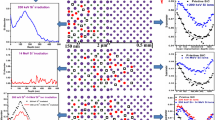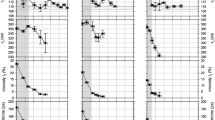16
/cm2 He+ implantation were investigated by slow-positron annihilation technique, transmission electron microscopy, Rutherford backscattering, and channeling spectroscopy. It was found that small vacancy clusters were induced in the surface region and big clusters (microbubbles) formed around the projected range in which the crystal was heavily damaged by the implantation. The small vacancy clusters in the near-surface region start to disappear at 300 °C and can be removed at temperatures up to 700 °C by dissociation and diffusing to the damaged region. This results in the growth of voids. The severely damaged region around the projected range begins to anneal out at temperatures higher than 600 °C, and He is released, leaving voids embedded inside the crystalline silicon.
Similar content being viewed by others
Author information
Authors and Affiliations
Additional information
Received: 15 December 1997/Accepted: 12 January 1998
Rights and permissions
About this article
Cite this article
Zhang, M., Scholz, R., Weng, H. et al. Defects and voids in He+-implanted Si studied by slow-positron annihilation and transmission electron microscopy . Appl Phys A 66, 521–525 (1998). https://doi.org/10.1007/s003390050707
Issue Date:
DOI: https://doi.org/10.1007/s003390050707




